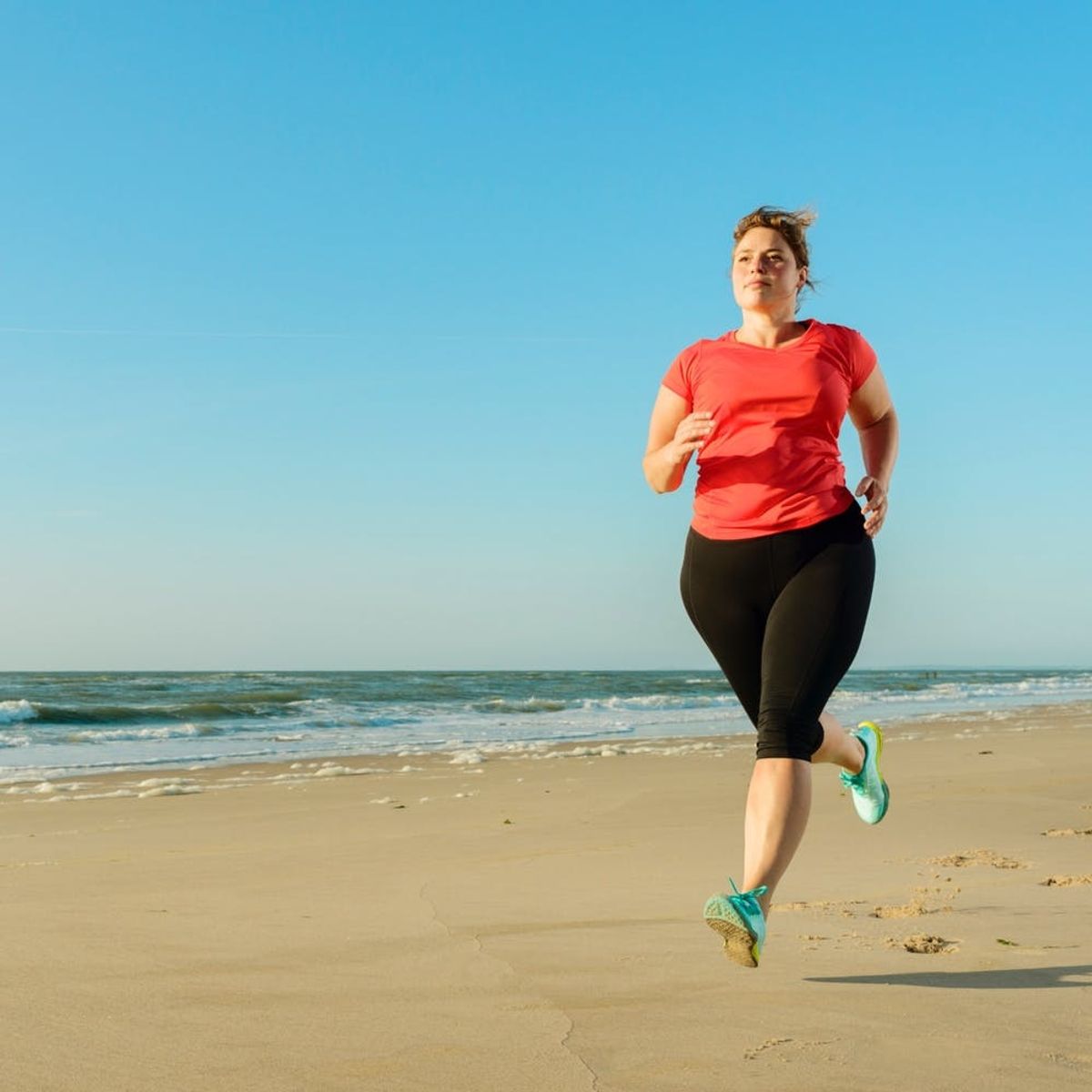From lazy to fit in just 30 days!
Here’s What Happened When I Went From Couch Potato to Exercising for 30 Days Straight

For many of us, 2017 was a doozy, but we here at Brit + Co are ready to hit refresh in 2018! Follow our Hit Refresh series through January for new ideas, hacks and skills that will help you achieve (and maintain!) those New Year’s resolutions.
When it comes to healthy living, I rock at eating well and cooking great meals — I love everything from Meatless Mondays to healthier takes on classic dishes to even making good-for-you versions of my favorite Cuban foods. But when we’re talking about exercise, I am a total couch potato. That’s not for a lack of trying, however. I’ve done everything I can think of to motivate myself to work out: paid for a pricey gym membership, asked a buddy to join me, and tried all kinds of fun classes. Nothing worked. Then, as I was browsing a cutesy store on a recent trip, I found the 30-Day Fitness Challenge calendar. Thinking that it might finally be the answer to get me off the couch and into a regular exercise routine, I took the plunge and bought it. Here’s what happened.
The adorable little calendar turned out to be quite easy to use. The simplicity (and yes, cuteness) of the thing was definitely a bonus as, day after day, I pulled down the tab to find my next set of exercise instructions. The way it worked is that I started out small, beginning with things like 15 minutes of running and some basic abs and squats. By the end, I was doing more than four times that. Here’s a breakdown of everything I did during my 30 days of exercise:
Day 1: Run for 15 minutes.
Day 2: 10 abs, 10 squats.
Day 3: 15 abs, 10 push-ups.
Day 4: 10 push-ups, 20 squats, 20 abs.
Day 5: REST.
Day 6: Run for 20 minutes.
Day 7: 30 abs, 30 squats, 15 push-ups.
Day 8: 60 squats.
Day 9: 40 abs, 20 push-ups.
Day 10: REST.
Day 11: Run for 25 minutes.
Day 12: 50 abs, 50 squats, 75 push-ups.
Day 13: 120 abs.
Day 14: 60 squats, 30 push-ups.
Day 15: REST.
Day 16: Run for 30 minutes.
Day 17: 60 squats, 60 abs, 30 push-ups.
Day 18: 50 push-ups.
Day 19: 70 abs, 70 squats.
Day 20: REST.
Day 21: Run for 35 minutes.
Day 22: 80 abs, 80 squats, 20 push-ups.
Day 23: 100 squats.
Day 24: 100 abs, 30 push-ups.
Day 25: REST.
Day 26: Run for 35 minutes, 50 abs, 20 push-ups.
Day 27: 100 squats, 100 abs, 25 push-ups.
Day 28: Run for 35 minutes, 60 abs, 50 squats, 20 push-ups.
Day 29: 120 abs, 30 push-ups.
Day 30: Run for 40 minutes, 50 abs, 50 squats, 30 push-ups.
I picked the time between Thanksgiving and Christmas Eve as when I would exercise. To be honest, I figured this would be a good way to make sure that I wasn’t overeating during the busy holiday season and also get me to do something more active than work and wrapping presents. Tackling this challenge during a very hectic time of year also helped me to realize that, if you really want to do something, you’ll find the time to do it.
But it wasn’t easy. In fact, I didn’t realize just how difficult it would be to go from basically never exercising to exercising every day. I knew it would be hard, but I wasn’t at all prepared for the first thing that happened: My abs hurt SO badly. By day four of my working out, I could barely stand to sit up. It hurt to bend over and it hurt to laugh. It basically hurt to do almost anything. And let me tell you: One day of rest was simply NOT enough!
One of the good things about this fitness challenge is that I did not have to think about what to do. One of the issues for anyone starting a new fitness routine is, often, not knowing where to start. Whenever I tried to start going to the gym, I never knew what I should do: Do I start with cardio? Do I try high-intensity interval training? Do I go for a class or the weight room? With this calendar, the decision on what exercise I would be doing on any given day was already made — which definitely took a lot of pressure off me.
Another thing I liked about doing this challenge is that there were days of rest. I know that might make it seem as if I am going back to my couch potato ways (okay, maybe a bit) but after those first few days and my oh-so-painful abs, breaks were definitely necessary. Having one every five days, a pattern I noticed early on, gave me something to look forward to since I knew that an easy day was coming.
The final thing that I began to quickly enjoy about this 30-day fitness challenge was that it finally — or, should I say, for the first time in my life — got me to the gym. Although that was not a required part of the challenge, I began to have almost daily “gym dates” with my husband, who already goes to the gym four or five times a week. Previously, I didn’t enjoy going with him because I felt too pressured, but now, deciding to do this on my own, it became actually fun.
In the end, I’m really glad that I did this challenge. I’ve never been any good at challenges (quitting halfway through is my calling card) but doing this one gave me a bigger sense of accomplishment than I could have imagined. I now feel that I can officially call myself someone who enjoys exercise — which is, by far, the biggest shock of all.
After 30 straight days of exercise, I discovered that I enjoy doing weight training-style exercising. I saw my strength increase and that felt great. I also learned that I still hate running, but that the stationary bike or the elliptical machine are fine when I want to do some cardio.
Overall, though, I can now happily say that 30 days has turned into many, many more. Although I won’t be going quite as often, I will definitely be continuing those gym dates several times a week. It seems that the 30 days of fitness was precisely the kick in the butt that I needed to get out of my couch potato rut.
What are your best tips for FINALLY getting to the gym? Tweet us at @BritandCo!
(Featured photo via Getty)













